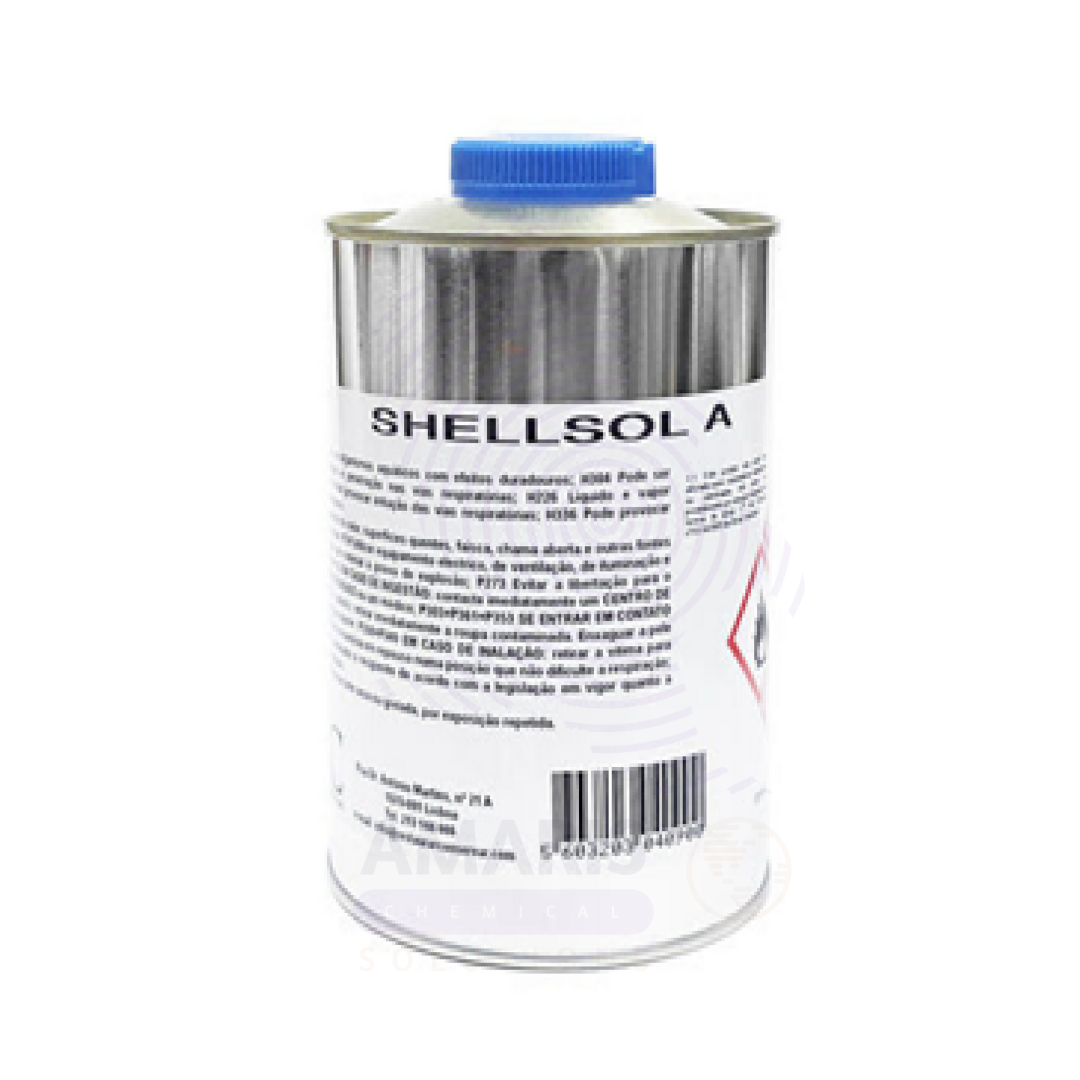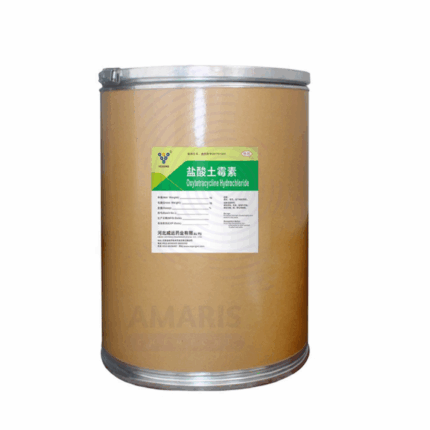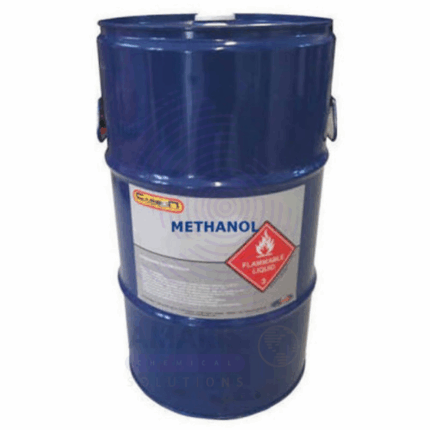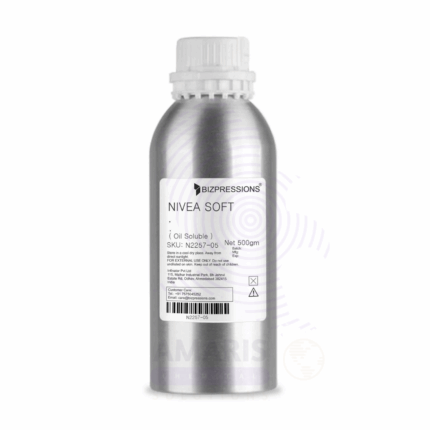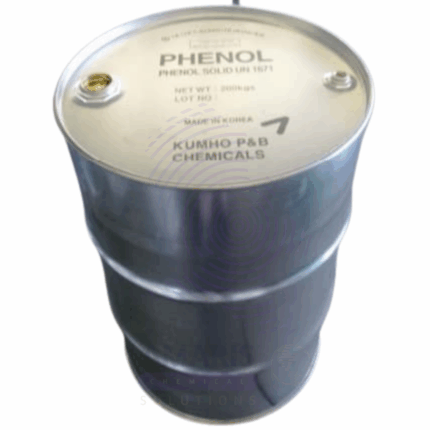Shellsol A
Shellsol A is a high-purity, low-aromatic, hydrocarbon solvent derived from petroleum refining processes. It is a clear, colorless liquid known for its excellent solvency power, low odor, and relatively low toxicity compared to other petroleum solvents. Shellsol A is widely used in coatings, inks, adhesives, and chemical processing where strong but controlled solvency is required. Its balanced evaporation rate and compatibility with various res ins and polymers make it a preferred choice in industrial and commercial applications.
Shellsol A
Primary Uses
Paints and Coatings
- Serves as a solvent and thinner for alkyd, acrylic, and other resin-based paints and varnishes.
- Provides optimal viscosity adjustment and improved flow and leveling in coatings.
- Used in surface preparation and cleaning prior to painting.
Printing Inks
- Utilized as a solvent in printing ink formulations to dissolve resins and pigments effectively.
- Enhances drying characteristics and print quality.
Adhesives and Sealants
- Functions as a solvent carrier in solvent-based adhesives to aid application and bonding.
- Improves spreadability and drying time.
Chemical Processing
- Used as a solvent in extraction, degreasing, and formulation of specialty chemicals.
Secondary Uses
Cleaning and Degreasing
- Employed in industrial cleaning fluids and degreasers for metal parts and machinery.
Laboratory Applications
- Used as a solvent in analytical and preparative chemical procedures requiring low aromatic hydrocarbons.
Pharmaceuticals and Cosmetics
Occasionally used in manufacturing processes where nonpolar solvents are needed (with regulatory approval).
Basic Identification Attributes
- Chemical Name (IUPAC): Hydrotreated petroleum distillate (Low Aromatic Hydrocarbon)
- Common/Trade Name: Shellsol A
- CAS Number: 64742-48-9 (varies by specific cut)
- HS Code: 2710.19
- Synonyms: Low aromatic hydrocarbon solvent; petroleum solvent A
Physical & Chemical Properties
- Physical State: Clear liquid
- Color & Odor: Colorless with mild hydrocarbon odor
- Boiling Range: Approximately 140–180°C (varies by batch)
- Density: Approx. 0.76–0.78 g/cm³
- Flash Point: Around 38–44°C (closed cup)
- Solubility: Insoluble in water; miscible with organic solvents
Safety & Hazard Attributes
- GHS Classification: Flammable liquid (Category 3); may cause skin and eye irritation
- Toxicity: Low to moderate; avoid prolonged exposure
- Exposure Limits: Follow occupational exposure limits and safety guidelines
Storage & Handling Attributes
- Storage Conditions: Store in tightly closed containers in a cool, well-ventilated area away from ignition sources
- Container Type: Supplied in drums, bulk tanks, or smaller sealed containers
- Shelf Life: Stable if stored under recommended conditions
- Handling Precautions: Use protective gloves and eyewear; avoid inhalation of vapors; ensure proper ventilation
Regulatory & Compliance Attributes
- Complies with industrial solvent regulations, including VOC content limits in many regions.
- Meets standards for use in coatings, inks, and adhesives per ASTM and REACH regulations.
- Classified and labeled according to GHS standards for transportation and handling.
Environmental & Health Impact
- Biodegradability: Readily biodegradable under aerobic conditions.
- Ecotoxicity: Low to moderate; avoid release into aquatic environments.
Bioaccumulation: Not significant.
Safety Handling Precautions
- PPE Required: Gloves, goggles, and protective clothing recommended; respiratory protection in poorly ventilated areas.
- Handling Guidelines: Use in well-ventilated areas; avoid ignition sources and static discharge.
- Storage Measures: Keep containers tightly sealed and stored away from heat and flame.
First Aid Measures
- Inhalation: Move to fresh air immediately; seek medical attention if breathing difficulties occur.
- Skin Contact: Wash thoroughly with soap and water; seek medical advice if irritation persists.
- Eye Contact: Rinse with plenty of water for at least 15 minutes; seek medical help if irritation continues.
- Ingestion: Do not induce vomiting; seek immediate medical assistance.
Firefighting Measures
- Fire Hazards: Highly flammable liquid and vapor.
- Extinguishing Media: Foam, dry chemical, CO₂, or water spray.
- Special Precautions: Use full protective gear and self-contained breathing apparatus for firefighting.
- Hazardous Combustion Products: Carbon oxides, hydrocarbons, and other toxic fumes.


 Preservatives(food)
Preservatives(food) Flavor Enhancers
Flavor Enhancers Acidulants
Acidulants Sweeteners
Sweeteners Antioxidants
Antioxidants Colorants(food)
Colorants(food) Nutraceutical Ingredients (food)
Nutraceutical Ingredients (food) Nutrient Supplements
Nutrient Supplements Emulsifiers
Emulsifiers
 Collectors
Collectors Dust Suppressants
Dust Suppressants Explosives and Blasting Agents
Explosives and Blasting Agents Flocculants and Coagulants
Flocculants and Coagulants Frothers
Frothers Leaching Agents
Leaching Agents pH Modifiers
pH Modifiers Precious Metal Extraction Agents
Precious Metal Extraction Agents
 Antioxidants(plastic)
Antioxidants(plastic) Colorants (Pigments, Dyes)
Colorants (Pigments, Dyes) Fillers and Reinforcements
Fillers and Reinforcements Flame Retardants
Flame Retardants Monomers
Monomers Plasticizers
Plasticizers Polymerization Initiators
Polymerization Initiators Stabilizers (UV, Heat)
Stabilizers (UV, Heat)
 Antifoaming Agents
Antifoaming Agents Chelating Agents
Chelating Agents Coagulants and Flocculants
Coagulants and Flocculants Corrosion Inhibitors
Corrosion Inhibitors Disinfectants and Biocides
Disinfectants and Biocides Oxidizing Agents
Oxidizing Agents pH Adjusters
pH Adjusters Scale Inhibitors( water)
Scale Inhibitors( water)
 Antioxidants(cosmetic)
Antioxidants(cosmetic) Emollients
Emollients Fragrances and Essential Oils
Fragrances and Essential Oils Humectants
Humectants Preservatives
Preservatives Surfactants(cosmetic)
Surfactants(cosmetic) Thickeners
Thickeners UV Filters
UV Filters
 Fertilizers
Fertilizers Soil Conditioners
Soil Conditioners Plant Growth Regulators
Plant Growth Regulators Animal Feed Additives
Animal Feed Additives Biostimulants
Biostimulants Pesticides (Herbicides, Insecticides, Fungicides)
Pesticides (Herbicides, Insecticides, Fungicides)
 Active Pharmaceutical Ingredients (APIs)
Active Pharmaceutical Ingredients (APIs) Excipients
Excipients Solvents(pharmaceutical)
Solvents(pharmaceutical) Antibiotics
Antibiotics Antiseptics and Disinfectants
Antiseptics and Disinfectants Vaccine Adjuvants
Vaccine Adjuvants Nutraceutical Ingredients (pharmaceutical)
Nutraceutical Ingredients (pharmaceutical) Analgesics & Antipyretics
Analgesics & Antipyretics
 Analytical Reagents
Analytical Reagents Solvents(lab)
Solvents(lab) Chromatography Chemicals
Chromatography Chemicals Spectroscopy Reagents
Spectroscopy Reagents microbiology-and-cell-culture-reagents
microbiology-and-cell-culture-reagents Molecular Biology Reagents
Molecular Biology Reagents Biochemical Reagents
Biochemical Reagents Inorganic and Organic Standards
Inorganic and Organic Standards Laboratory Safety Chemicals
Laboratory Safety Chemicals Specialty Laboratory Chemicals(Special Laboratory Equipment)
Specialty Laboratory Chemicals(Special Laboratory Equipment)
 Demulsifiers
Demulsifiers Hydraulic Fracturing Fluids
Hydraulic Fracturing Fluids Scale Inhibitors(oil)
Scale Inhibitors(oil) Surfactants(oil)
Surfactants(oil) Drilling Fluids
Drilling Fluids
 Dyes and Pigments
Dyes and Pigments Bleaching Agents
Bleaching Agents Softening Agents
Softening Agents Finishing Agents
Finishing Agents Antistatic Agents
Antistatic Agents
 Admixtures
Admixtures Waterproofing Agents
Waterproofing Agents Sealants and Adhesives
Sealants and Adhesives Curing Compounds
Curing Compounds Concrete Repair Chemicals
Concrete Repair Chemicals Anti-Corrosion Coatings
Anti-Corrosion Coatings
 Surfactants(cleaning)
Surfactants(cleaning) Builders
Builders Enzymes
Enzymes Solvents (Cleaning)
Solvents (Cleaning) Fragrances
Fragrances
 Electronic Chemicals
Electronic Chemicals Catalysts
Catalysts Lubricants
Lubricants Photographic Chemicals
Photographic Chemicals Refrigerants
Refrigerants Automotive chemicals
Automotive chemicals Pyrotechnic Chemicals
Pyrotechnic Chemicals
 Biodegradable Surfactants
Biodegradable Surfactants Bio-based Solvents
Bio-based Solvents Renewable Polymers
Renewable Polymers Carbon Capture Chemicals
Carbon Capture Chemicals Wastewater Treatment Chemicals
Wastewater Treatment Chemicals
 Pigments
Pigments Solvents(paint)
Solvents(paint) Specialty Coatings
Specialty Coatings Binders/Resins
Binders/Resins Additives
Additives Driers
Driers Anti-Corrosion Agents
Anti-Corrosion Agents Functional Coatings
Functional Coatings Application-Specific Coatings
Application-Specific Coatings
 Fresh Herbs
Fresh Herbs Ground Spices
Ground Spices Whole Spices
Whole Spices Spice Blends
Spice Blends Dried Herbs
Dried Herbs
 Leavening Agents
Leavening Agents Dough Conditioners
Dough Conditioners Flour Treatments
Flour Treatments Fat Replacers
Fat Replacers Decoratives
Decoratives Preservatives(baking)
Preservatives(baking)
 Plasticizers & Softeners
Plasticizers & Softeners Reinforcing Agents
Reinforcing Agents Adhesion Promoters
Adhesion Promoters Vulcanizing Agents
Vulcanizing Agents Antidegradants
Antidegradants Blowing Agents
Blowing Agents Fillers & Extenders
Fillers & Extenders Accelerators & Retarders
Accelerators & Retarders